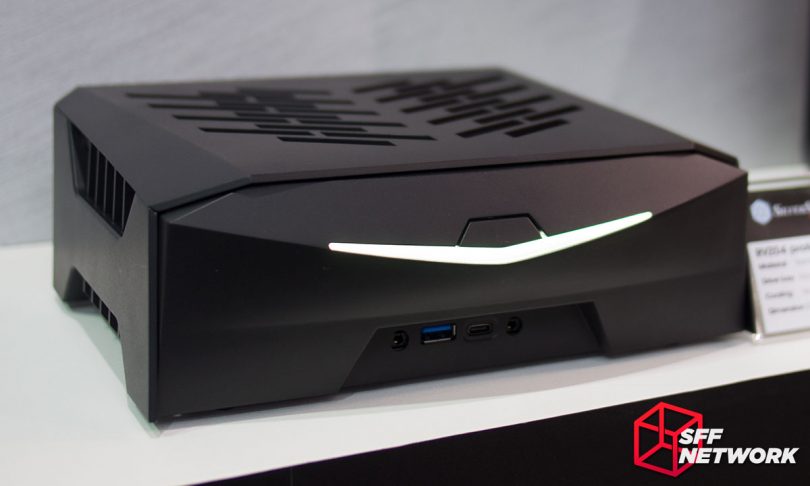My month old Silverstone/Asus STX setup behind the stand of my Philips 27" 4k monitor. I had a Deskmini H110 for almost two years, but sudden freezes became a daily occurrence after I bought that 4k monitor and connected it to the Display Port for 4k@60 Hz. I had sudden freezes before (even in BIOS setup!), but they were rather rare with Full HD. Freezes which require a restart are a known problem with the Asrock H110M-STX. My impression is they occur when there is load on the hardware acceleration by the GPU (like with Chrome while zooming around in Google Maps).
Also the unused Realtek audio chip simply died and disappeared from my W10pro device manager - while electric noise was always present with the Asrock board. Because of the typical freezes a new Asrock H110M-STX mainboard was out of question - and they are no longer avaialbe individualy.
Now I moved my Core i3-7100, Noctua cooler, 16 GB Crucial DDR4-2400 1.2 V RAM, an Intel AC 8265 WiFi card, two dual band antennas, a Samsung 960 Evo NVMe, a 860 Evo SSD and the Asrock supplied 120 W power brick onto an Asus H110S1/CSM Mini-STX board.
Since Asus uses regular 2.5" drive cabling and there is no way in the Asrock case tray to route the SSD cables under the board, I needed a new case, too. The Silverstone VT02 was essentially the only cheaply available and visually acceptable case.
Everything fits nicely, although I regard the Silverstone as flimsy compared to the sturdy Asrock case. Also, the open bore holes on the underside mean dirt can enter from the table easily. There is no shielding between the mainboard and the drives under it. The LED lights are too bright on the table in front of me. But the routing of the cables, especially the WiFi antenna cables, is much easier.
The Asus H110S1/CSM still has BIOS support, no useless analog video output but two HDMIs and a DP instead. Unfortunately it has no on board USB headers.
What did I gain compared to the Asrock Deskmini H110?
- stability! No more freezes with Asus
- no electric component noise from the board any more
- regained an on board sound chip (but I use USB-DACs anyway)
- better cable management
What did I lose?
- M.2 NVMe with only Gen. 2 x 4 instead of Gen. 3 x 4 on the Asrock, since Asus routes everything through the H110 chipset
- two USB 2.0 ports less because of the lack of a on board header. And there are no known fitting extra USB ports for this case
- case sturdiness is reduced
- case LEDs are too bright now
The Noctua is kept at constant 800 rpm up untill the mid 50s °C, like it was in the Asrock - silence

All USB 3.0 ports are connected to hubs, while the USB 2.0 is reserved for the USB-DAC. One of the HDMI ports is connected to an AV-receiver for digital sound output.




